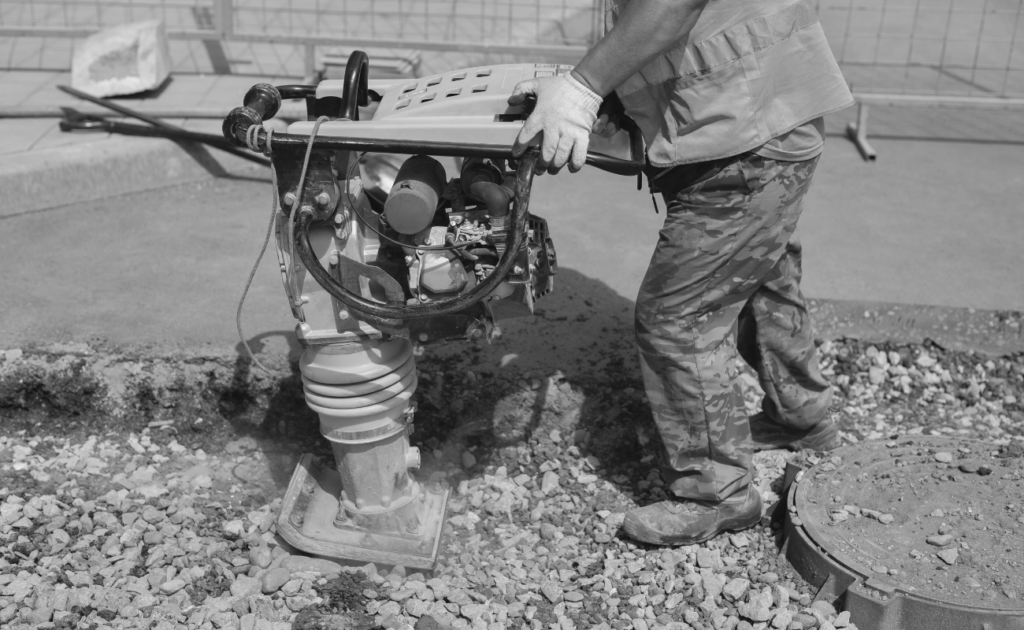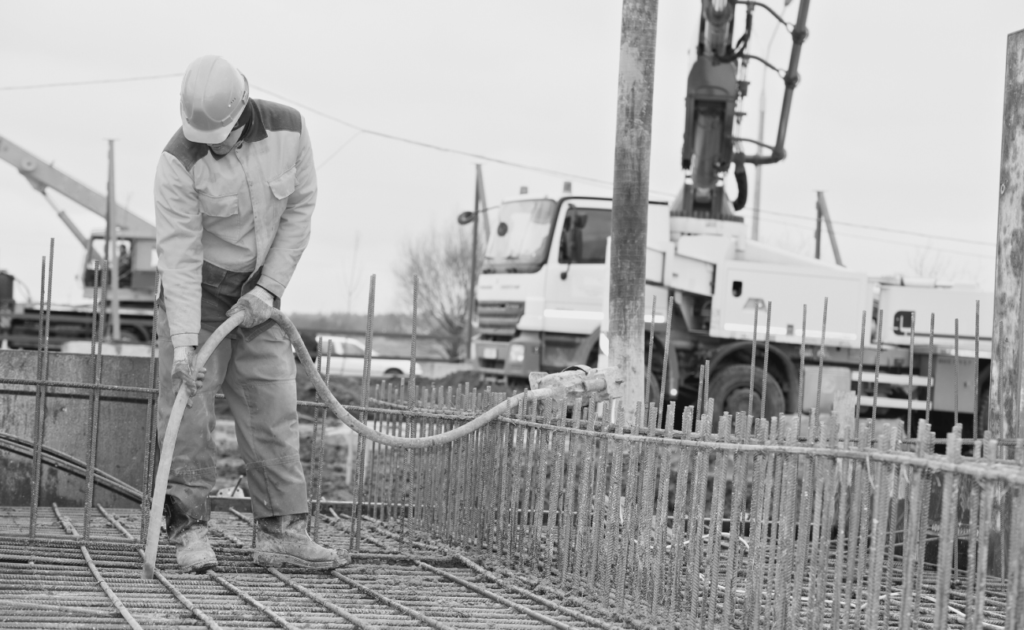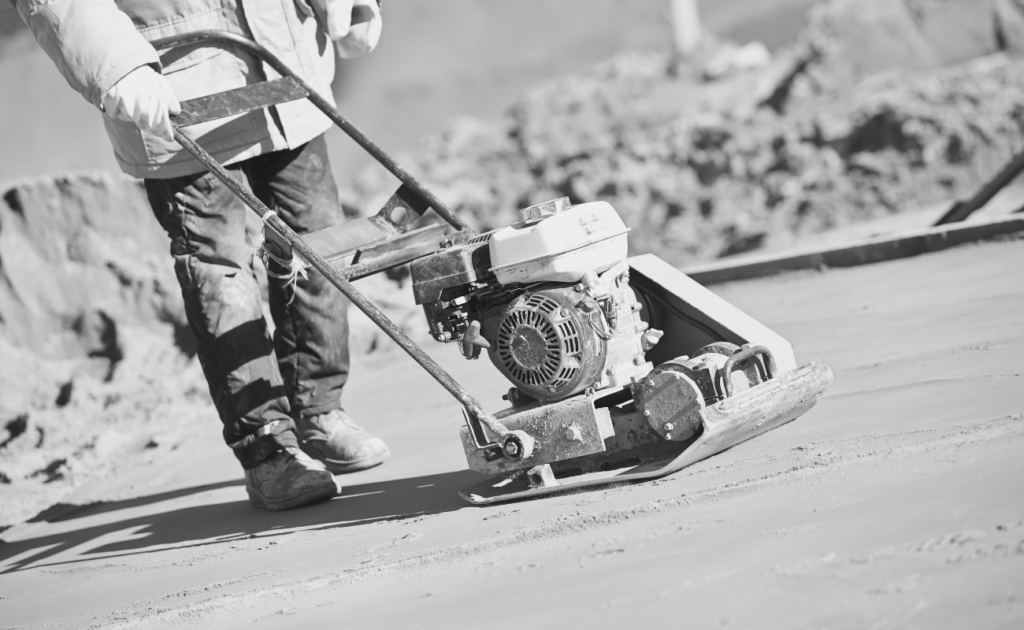In the world of industry and machinery, where precision and reliability reign supreme, understanding the importance of vibration monitoring is paramount. Every mechanical system, from the largest industrial powerhouse to the smallest hand-held tool, generates vibrations as it operates. While these vibrations are often imperceptible to the human senses, they are the key to unlocking a world of insight into equipment health and performance.
This is where vibration monitors come in, playing a critical role. Imagine having the ability to peer into the inner workings of your machinery, detect the most subtle variations, and anticipate potential problems before they escalate into costly failures. Vibration monitors are the sentinels of this predictive maintenance realm, tirelessly measuring, recording, and interpreting the vibrations that pass through machines.
In this blog, we take a deep dive into the key role vibration monitors play in the industrial landscape. We explore how these unassuming devices, packed with cutting-edge technology, not only improve equipment reliability but also raise safety standards to new heights. Let’s explore how vibration monitors are paving the way for a future where equipment operates at peak performance, downtime is a rarity and safety is paramount.
The basics of vibration monitoring
In the intricate web of machinery that powers our industries and keeps the world moving, vibrations are the subtle language that whispers the secrets of equipment health. But how do we decipher this language, and why is it so crucial to listen attentively? To understand this, we need to delve into the fundamentals of vibration monitoring.
What are vibration monitors?
At their core, vibration monitors are specialized instruments designed to detect, measure, and analyze the vibrations generated by machinery and mechanical systems. These monitors act as vigilant sentinels, tirelessly observing and recording the intricate dance of movements within the equipment.
Equipped with sensitive sensors and sophisticated technology, vibration monitors can detect even the most minuscule fluctuations in vibrations. These fluctuations, often imperceptible to the human senses, can signify impending issues or irregularities in the machinery’s operation.
Why vibration monitoring matters
Vibration monitoring matters because it provides a window into the inner workings of machines and equipment, offering invaluable insights into their health and performance. Here’s why it’s so significant:
1. Early warning system: Vibration monitors serve as early warning systems, alerting operators and maintenance teams to anomalies and potential problems before they escalate. This proactive approach allows for timely intervention, minimizing the risk of equipment failure and costly downtime.
2. Preventive maintenance: By continuously monitoring vibrations, organizations can implement a preventive maintenance strategy. This means conducting maintenance tasks based on actual equipment conditions rather than fixed schedules, optimizing maintenance resources, and extending the lifespan of machinery.
3. Enhanced safety: Vibration monitoring isn’t just about equipment reliability; it also plays a pivotal role in ensuring workplace safety. Identifying abnormal vibrations can prevent catastrophic failures that may pose risks to personnel and the environment.
4. Cost savings: Timely maintenance, reduced downtime, and increased equipment lifespan all translate into significant cost savings for organizations. Vibration monitoring is an investment that pays off through improved operational efficiency and reduced repair and replacement expenses.
As we venture deeper into the world of vibration monitors, we’ll explore how these unassuming devices become the backbone of predictive maintenance and how they contribute to safer, more efficient industrial operations.

Types of vibration monitors
In the field of vibration monitoring, diversity is key. Different industries and applications require specialized tools to accurately capture and analyze vibrations. Let’s explore the three primary types of vibration monitors, each tailored to specific monitoring needs.
Hand-arm vibration monitors
Hand-arm vibration monitors, as the name suggests, are designed to assess the vibrations transmitted from tools and machinery to the operator’s hand and arm. These vibrations are a common occupational hazard in industries such as construction, manufacturing, and maintenance, where power tools like jackhammers, sanders, and grinders are frequently used.
Why do they matter?
– Worker safety: Prolonged exposure to hand-arm vibrations can lead to hand-arm vibration syndrome (HAVS), a condition characterized by damage to blood vessels, nerves, and joints. Hand-arm vibration monitors help protect workers from such health risks.
– Regulatory compliance: Many countries have strict regulations in place to limit workers’ exposure to hand-arm vibrations. Monitoring with precision ensures compliance with these regulations and avoids potential legal issues.
Whole-body vibration monitors
Whole-body vibration monitors take a broader perspective by measuring vibrations that affect the entire body of an operator or worker. This type of monitoring is commonly encountered in industries like mining, transportation, and agriculture, where heavy machinery and vehicles are operated.
Why do they matter?
– Worker well-being: Prolonged exposure to whole-body vibrations can lead to various health issues, including lower back pain, spinal injuries, and neck discomfort. Whole-body vibration monitors are essential for safeguarding the well-being of workers.
– Maintenance insights: Besides worker safety, these monitors also help in identifying potential issues with machinery and vehicles, allowing for preventative maintenance to be performed before critical failures occur.
Building and structural vibration monitors
Building and structural vibration monitors focus on the vibrations experienced by buildings, bridges, and other structures. These monitors are often used in scenarios where activities like construction, mining blasting, or industrial operations can generate vibrations that may harm nearby structures or pose safety risks to people.
Why do they matter?
– Structural safety: Assessing vibrations is critical to preserving the structural integrity of buildings and infrastructure. Vibration monitors provide data that helps prevent structural damage and the need for costly repairs.
– Safety compliance: Construction and industrial activities often need to adhere to safety regulations related to vibrations. These monitors assist in ensuring compliance with these standards and minimizing potential legal liabilities.
Each type of vibration monitor plays a vital role in monitoring and managing vibrations in different environments. Together, they contribute to safer workplaces, enhanced equipment reliability, and the overall well-being of both workers and structures.

Why equipment reliability is crucial
Reliability is not just a desirable attribute; it’s a paramount necessity. In this section, we’ll uncover the critical importance of equipment reliability and the significant role that vibration monitoring plays in maintaining it.
The cost of equipment failures
Equipment failures can be financially crippling and operationally disastrous. When machinery breaks down unexpectedly, it leads to a cascade of problems, including:
1. Downtime costs: Unplanned equipment downtime halts production, leading to revenue loss and delays in project timelines. The longer the downtime, the more detrimental the impact on the bottom line.
2. Repair expenses: Repairing or replacing damaged machinery can be exorbitantly expensive, especially if critical components are affected. These costs can quickly eat into profit margins.
3. Maintenance overheads: Reactive maintenance, performed in response to equipment failures, tends to be more costly than proactive, scheduled maintenance. Emergency repairs often require specialized labor and expedited shipping of replacement parts.
4. Loss of reputation: Consistent equipment failures can damage a company’s reputation. Clients and customers may lose trust, leading to a decline in business opportunities.
5. Safety hazards: Equipment failures can pose significant safety risks to workers, potentially resulting in accidents and injuries, which, in turn, incur further costs in terms of workers’ compensation and legal issues.
Given these substantial financial and operational repercussions, it becomes evident that preventing equipment failures is a strategic imperative for any organization.
The link between vibration and machinery health
Understanding machinery health is central to ensuring equipment reliability. Vibration serves as a reliable indicator of machinery health for several reasons:
1. Early warning: Vibration monitoring can detect subtle changes in equipment performance long before visible signs of wear or damage appear. This early warning system allows maintenance teams to address issues proactively, preventing costly failures.
2. Comprehensive insight: Vibration analysis provides a comprehensive view of machinery health. By examining vibration patterns, frequencies, and amplitudes, technicians can identify specific problems, such as misalignments, and unbalanced, or worn bearings.
3. Data-driven decision-making: Vibration data offers a solid foundation for data-driven decision-making. Armed with precise information about equipment conditions, maintenance teams can prioritize tasks, allocate resources efficiently, and extend the lifespan of machinery.
4. Condition-based maintenance: Vibration monitoring enables the adoption of condition-based maintenance strategies. Instead of adhering to rigid schedules, maintenance activities are performed based on the actual condition of the equipment, optimizing resource utilization and minimizing downtime.
5. Improved safety: Ensuring machinery operates within safe vibration parameters enhances worker safety. By monitoring and managing vibrations, companies mitigate the risk of accidents and injuries caused by equipment failures.
In essence, vibration monitoring serves as an invaluable tool for preserving equipment reliability. It empowers organizations to proactively address issues, reduce downtime, cut maintenance costs, and uphold their reputation for quality and safety.
Benefits of using vibration monitors
Now that we’ve grasped the fundamentals of vibration monitoring and its pivotal role in maintaining equipment reliability, let’s delve into the numerous advantages it offers to industries and organizations. Utilizing vibration monitors comes with a suite of benefits that extend beyond just keeping machines in good working order.
Early detection of machinery issues
One of the primary benefits of vibration monitoring is its capability to provide early detection of machinery issues. By continuously monitoring vibration patterns and deviations, these systems can identify anomalies that might indicate impending problems. This early warning system allows maintenance teams to intervene before issues escalate, mitigating the risk of costly breakdowns.
Imagine a scenario where a critical industrial pump begins to develop an imbalance due to wear and tear. Without vibration monitoring, this issue might go unnoticed until the pump fails catastrophically, leading to extensive downtime and repair costs. However, with vibration monitors in place, technicians receive alerts as soon as abnormal vibration patterns emerge. This enables them to schedule maintenance at a convenient time, preventing unexpected breakdowns and their associated disruptions.
Preventive maintenance with vibration data
Vibration data collected by monitors serves as the cornerstone of preventive maintenance strategies. Instead of relying on a reactive approach where maintenance occurs only after equipment failures, organizations can proactively address issues based on actual data.
Here’s how it works: Vibration monitors continuously collect data, which is then analyzed to assess machinery health. By tracking changes in vibration signatures, maintenance teams can pinpoint specific issues, such as misalignments, unbalance, or deteriorating bearings. Armed with this information, they can plan and execute maintenance activities precisely when needed.
Preventive maintenance offers several advantages:
– Cost savings: By addressing issues before they lead to breakdowns, organizations reduce repair and replacement costs. Preventive maintenance is often more economical than emergency repairs.
– Downtime reduction: Scheduled maintenance minimizes unplanned downtime, optimizing operational efficiency and reducing production losses.
– Extended equipment lifespan: Regular maintenance, guided by vibration data, helps extend the lifespan of machinery, maximizing the return on investment.
– Enhanced reliability: Maintaining equipment in peak condition enhances reliability, reducing the risk of unexpected failures and the associated operational disruptions.
Ensuring occupational safety
Occupational safety is a paramount concern in industrial settings. Vibrations emanating from machinery can pose risks to workers’ health, especially in cases of prolonged exposure to high levels of vibration. Vibration monitors play a crucial role in ensuring occupational safety by:
– Exposure assessment: Vibration monitors provide an accurate assessment of workers’ exposure to hand-arm and whole-body vibrations. This data is essential for determining compliance with safety standards and guidelines.
– Limit adherence: Occupational safety regulations set limits on allowable exposure to vibrations. Vibration monitors enable organizations to monitor and enforce compliance with these limits, protecting workers from potential health hazards.
– Proactive measures: Early detection of excessive vibrations allows organizations to take proactive measures to reduce exposure. This can involve modifying work processes, providing protective equipment, or implementing engineering controls.
Incorporating vibration monitors into workplace safety programs not only safeguards the well-being of employees but also ensures compliance with regulatory requirements. It demonstrates a commitment to creating a safe and healthy work environment.

Choosing the right vibration monitoring solution
As we venture further into the field of vibration monitoring, it’s essential to understand that not all monitoring solutions are created equal. Selecting the right vibration monitors for your specific needs is critical to harnessing the full benefits of this technology.
Factors to consider
1. Application and use case: Begin by defining your application and use case. Are you monitoring hand-arm vibrations, whole-body vibrations, or structural vibrations? Different scenarios require specialized monitoring solutions. For instance, hand-arm vibration monitors are tailored for use with power tools, while whole-body vibration monitors are designed for broader applications.
2. Measurement range: Consider the range of vibrations you need to monitor. Ensure that the selected monitor can accurately measure vibrations within the desired range. This ensures that you capture data relevant to your specific needs.
3. Frequency range: Vibrations occur across a spectrum of frequencies. Verify that the vibration monitor has an appropriate frequency response to capture the specific frequencies relevant to your application. Different industries and equipment may generate vibrations at varying frequencies.
4. Data storage and transfer: Assess the data storage capabilities of the monitoring solution. Ensure that it can store data for the desired period without requiring frequent data retrieval. Additionally, consider how data will be transferred from the monitor to a computer or analysis tool. Modern monitors may offer wireless data transfer options for convenience.
5. Power source: Evaluate the power source of the monitor. Depending on your application and monitoring duration, choose between monitors powered by internal batteries, external power supplies, or even solar panels. The power source should align with your operational needs.
6. User interface: A user-friendly interface simplifies data collection and analysis. Ensure that the monitor’s user interface is intuitive and easy for your team to navigate. User-friendly software can streamline the process of gathering and interpreting data.
7. Cost: Budget considerations are essential. While it’s crucial to invest in a reliable monitoring solution, also weigh the cost against the benefits it provides. Cost-effectiveness is achieved by selecting a monitor that meets your requirements without unnecessary features.
8. Manufacturer reputation: Lastly, take into account the reputation of the manufacturer. A reputable manufacturer with a track record of producing high-quality monitors is more likely to provide reliable and durable solutions. Customer reviews and recommendations can also offer insights into the product’s performance.
How accuracy impacts data quality
Accuracy is a cornerstone of vibration monitoring. The quality and reliability of the data you collect depend on the accuracy of the monitor. Here’s why accuracy matters:
– Effective Decision-Making: Accurate data ensures that the decisions made based on monitoring results are reliable. Inaccurate data can lead to misguided actions or maintenance efforts.
– Early Issue Detection: Precise measurements enable early detection of vibration anomalies. Accuracy allows you to identify subtle deviations in vibration patterns, preventing issues from worsening.
– Compliance with Standards: Many industries have specific vibration standards and safety regulations. Accurate data is crucial for demonstrating compliance and adherence to these standards.
– Cost Savings: Timely and accurate data can lead to cost savings. Preventive maintenance efforts guided by accurate data are more efficient and less costly than reactive repairs.
– Occupational Safety: In the context of occupational safety, accurate data is essential for assessing worker exposure to vibrations. Ensuring compliance with safety regulations hinges on accurate measurements.
When selecting a vibration monitoring solution, prioritize accuracy as a non-negotiable feature. High-quality monitors are designed to provide precise measurements within defined ranges and frequencies. Additionally, proper calibration and maintenance of the monitor are essential to maintaining accuracy over time.
Real-world applications
Now that we’ve delved into the fundamentals of vibration monitoring, let’s shift our focus to real-world applications. Understanding how vibration monitors are employed in various industries provides valuable insights into their practical significance. In this section, we’ll explore two compelling case studies that highlight the impact of vibration monitors in manufacturing and construction settings.
Vibration monitors in manufacturing
Manufacturing facilities are bustling hubs of activity, with heavy machinery, production lines, and equipment operating around the clock. Ensuring the reliability and safety of these manufacturing processes is paramount. Vibration monitors play a pivotal role in achieving these objectives.
Case Study: Enhancing Productivity and Safety in a Manufacturing Plant
In a bustling manufacturing plant, precision and efficiency are key drivers. However, the continuous operation of heavy machinery can lead to wear and tear, potentially compromising product quality and worker safety. Here’s how vibration monitors come into play:
1. Early Detection of Machinery Issues: Vibration monitors are strategically placed on critical machinery to monitor vibrations in real time. These monitors detect even subtle deviations in vibration patterns, signaling potential issues.
2. Preventive Maintenance: Armed with accurate vibration data, maintenance teams can schedule preventive maintenance proactively. This minimizes unexpected downtime, reduces repair costs, and extends the lifespan of machinery.
3. Worker Safety: Manufacturing plants must adhere to strict occupational safety standards. Vibration monitors assess worker exposure to vibrations, ensuring compliance with safety regulations. If exposure levels approach dangerous thresholds, immediate action can be taken to protect workers.
4. Quality Assurance: Consistent machinery operation is crucial for maintaining product quality. Vibration monitors help identify irregularities that could affect product consistency, enabling timely adjustments to ensure product quality.
In this manufacturing plant, the implementation of vibration monitors resulted in improved productivity, reduced maintenance costs, and enhanced worker safety. The ability to detect issues early and take preventive measures had a substantial impact on the plant’s overall efficiency and bottom line.
Vibration monitoring in construction
The construction industry is marked by heavy machinery, extensive earthmoving activities, and the dynamic nature of building projects. Effective monitoring of vibrations is vital to prevent structural damage and ensure the safety of nearby structures and residents.
Case Study: Safeguarding Structures during Pile Driving
Imagine a construction site where pile driving is a common practice. The powerful impact of pile driving can generate substantial vibrations that may affect nearby buildings. Vibration monitors play a critical role in preserving the integrity of these structures.
1. Continuous Monitoring: Vibration monitors are strategically placed in and around the construction site, particularly near sensitive structures. These monitors continuously measure vibrations generated during pile driving activities.
2. Real-Time Analysis: As vibrations occur, the monitors provide real-time data, allowing construction teams to assess their impact on nearby structures. This immediate feedback enables quick adjustments if vibrations approach critical levels.
3. Preventing Structural Damage: By closely monitoring vibrations, construction teams can prevent structural damage to nearby buildings. Adjustments in pile driving techniques or equipment can be made to minimize vibrations within safe limits.
4. Regulatory Compliance: Construction projects are subject to regulatory standards concerning allowable vibration levels. Vibration monitors provide essential data to demonstrate compliance with these standards, helping construction companies avoid potential legal issues.
In this construction scenario, the use of vibration monitors not only ensured the structural safety of nearby buildings but also facilitated compliance with regulatory requirements. The proactive approach to vibration monitoring not only prevented potential structural damage but also enhanced the project’s reputation for responsible construction practices.
These case studies illustrate the tangible benefits of vibration monitors in real-world applications. Whether in manufacturing or construction, the ability to detect, measure, and manage vibrations effectively contributes to enhanced equipment reliability, safety, and overall operational efficiency.

Ensuring compliance with standards
When it comes to vibration monitoring, adhering to international standards and regulatory requirements is paramount.
International standards for vibration exposure
International organizations have established comprehensive standards to safeguard workers and structures from the potentially harmful effects of excessive vibrations. Two key sets of standards address vibration exposure:
1. ISO 5349: Hand-Arm Vibration
ISO 5349 is the international standard that specifically addresses hand-arm vibration exposure. It provides guidelines for evaluating the risk of hand-arm vibration syndrome (HAVS) and other health issues caused by exposure to vibrations from hand-held power tools. This standard outlines methods for measuring and assessing hand-arm vibrations, ensuring that workers are not exposed to levels that could result in adverse health effects.
2. ISO 2631: Whole-Body Vibration
ISO 2631 is a set of international standards that focus on whole-body vibration exposure. It provides criteria for evaluating and controlling the risk of health problems associated with prolonged exposure to whole-body vibrations, such as those experienced by heavy equipment operators or long-distance truck drivers. ISO 2631-1, in particular, offers guidelines for the measurement and assessment of whole-body vibrations.
Meeting regulatory requirements
In addition to international standards, various countries and regions have established regulatory requirements to protect workers and structures from harmful vibrations. Compliance with these regulations is essential for legal and ethical reasons. Let’s take a closer look at how vibration monitors play a role in meeting regulatory requirements:
1. Occupational Safety and Health Administration (OSHA) – USA
In the United States, OSHA sets guidelines for workplace safety, including exposure to vibrations. Employers are required to assess and manage vibration risks to protect workers. Vibration monitors help organizations comply with OSHA regulations by providing accurate data on worker exposure levels. This data is used to implement control measures and ensure that exposure remains within acceptable limits.
2. Control of Vibration at Work Regulations – UK
The UK has specific regulations governing vibration exposure in the workplace. The Control of Vibration at Work Regulations sets action and limit values for both hand-arm and whole-body vibrations. Vibration monitors are instrumental in helping organizations in the UK comply with these regulations by continuously measuring and recording vibration levels, ensuring that they stay within permissible limits.
3. European Directive 2002/44/EC
The European Union has adopted Directive 2002/44/EC, which establishes minimum health and safety requirements regarding the exposure of workers to the risks arising from vibrations. Member states are required to implement measures to protect workers from excessive vibration exposure. Vibration monitors are indispensable tools for organizations operating in EU countries, aiding in compliance with this directive by monitoring and managing vibration exposure levels.
4. National Regulations
Beyond international and regional standards, many countries have their national regulations and guidelines regarding vibration exposure. These regulations may vary in terms of permissible exposure limits and monitoring requirements. Vibration monitors offer the flexibility to adapt to the specific regulatory requirements of each country, ensuring organizations remain compliant with local laws.
Incorporating vibration monitors into workplace safety protocols is not only a proactive step in ensuring compliance but also a means of safeguarding the well-being of employees and the structural integrity of buildings. By consistently monitoring and managing vibration levels, organizations can mitigate risks, prevent legal issues, and uphold their commitment to safety and regulatory compliance.
Conclusion
In the world of industry and machinery, where precision and reliability reign supreme, understanding the importance of vibration monitoring is paramount. Every mechanical system, from the largest industrial powerhouse to the smallest hand-held tool, generates vibrations as it operates. While these vibrations are often imperceptible to the human senses, they are the key to unlocking a world of insight into equipment health and performance.
This is where vibration monitors come in, playing a critical role. Imagine having the ability to peer into the inner workings of your machinery, detect the most subtle variations, and anticipate potential problems before they escalate into costly failures. Vibration monitors are the sentinels of this predictive maintenance realm, tirelessly measuring, recording, and interpreting the vibrations that pass through machines.
